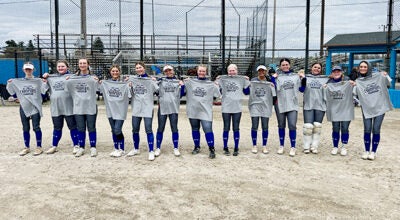Roberts addresses MHSAA changes
Published 9:25 am Tuesday, July 1, 2014
By JAMES COOK
The Record-Eagle
EAST LANSING (MCT) — The Michigan High School Athletic Association has implemented several policy changes for the upcoming school year, primarily dealing with athlete safety and transfer rules.
“Improving acclimatization is one thrust, and the second is reduced head-to-head contact in practice all season long,” MHSAA executive director John Roberts said.
The 2013-14 season was the first for a new policy on heat and humidity procedures, and football in particular will continue to see more scrutiny.
“They implemented it with less resistance and more enthusiasm and more training than I imagined they would,” Roberts said. “They know any death from heat illness is someone’s mistake. It should not happen. There should never be one. Heat illness is one of those things in sports that is entirely preventable. Unlike so many other things we cannot control, that we can. And schools get that.”
Football practices will not be allowed to wear full pads for one more day than in the past.
Last year, it was the first three days. Now it will be two days with helmets only and two more with shoulder pads.
Teams will also only be allowed to conduct one full contact — or “collision” — practice in a day prior to the first game, even during preseason two-a-days. After the first game, teams can engage in no more than two full contact practices per week, non exceeding three hours. And total practice time for two-a-days cannot exceed five hours. Those totals do not include weight lifting or video sessions.
Athletic-related transfer rules will be fully enforced this year, Roberts said.
“We are in the midst of doing more to toughen our eligibility rules related to transfers that any time in out history since the transfer rules was first adopted in a rudimentary form back in the 1980s,” he said.
Perhaps the biggest change in the transfer area is the “links” rule.
“If a student who has played school sports at one school, does some things that link them to another school and then transfers to that school, the period of ineligibility is doubled from one semester to two,” Roberts said.
For example, if an athlete plays for another school’s coach on an AAU or other club or travel team and then transfers to that coaches’ school, that could constitute a violation.
The MHSAA’s “undue influence” rule that discourages recruiting will see an increase in the maximum penalty from a one-year suspension for coaches to four years.
“The four-year penalty may help us have the tools that we need to slow down some of the almost rampant recruiting we see,” Roberts said.
Roberts said a task force has already met twice and will have two more meetings to address the issue of expanding the MHSAA’s jurisdiction to sixth-grade and possibly even fifth-grade athletics, with post-season tournaments for those grades a possibility.
“If we looked at interscholastic athletics being in a competitive business in the youth sports marketplace, we’d do a lot of things differently than we do today,” Roberts said. “We wouldn’t wait for the consumers to reach high school and come to us. We’d go get the consumers earlier. We wouldn’t wait for high school. We’d go for earlier grades and try to keep and hold them. … If we look at this as a competitive business, we do everything wrong. We wait for kids to grow up, grow older. And we watch non-school youth sports organizations gobble the kids up and often burn them out. Eighty-five percent of those who begin playing sports have stopped playing organized sports by the time they reach us in high school. They’ve been burned out or found other interests along the way.”
Out-of-season coaching rules are another consideration of the task force.
“Right now, we are fighting club and non-school youth sports with two hands behind our back,” Roberts said. “We would release one hand if we were marketing ourselves to younger grades and we would release the other hand if we could have our coaches involved with those kids more out of season.”
Votes to include sixth grade received 50-percent support two years ago and 60 percent a year ago, Roberts said.
Other changes coming in the near future include:
• All assistants and sub-varsity coaches at the high school level must complete the same rules and risk management meeting (or an online alternative) that varsity head coaches have to take.
• In 2015-16, all varsity head coaches will be required to have current CPR certification.
• In 2016-17, all first-time varsity head coaches have to complete the MHSAA’s Coaches Advancement Program level one or two.
“These three things seem remarkably aggressive to some folks in our schools,” Roberts said. “They are really benign. They are no more than average for what is happening across school sports nationwide. We are bringing ourselves from the back of the room to at least the middle row.”





